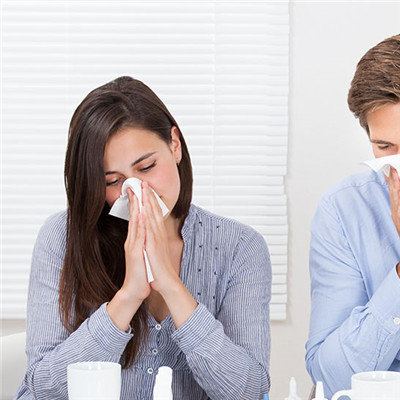Symptoms of anthrax?
summary
For many infectious diseases, if you can understand some of the relevant symptoms, then at the beginning of suffering from this disease, you can timely treatment. So, symptoms of anthrax? Let's talk about it
Symptoms of anthrax?
Skin anthrax: the most common, about 95%, can be divided into anthrax carbuncle and malignant edema two types. It mainly occurs in herdsmen and workers related to fur, meat, livestock and other occupations. At the beginning, it is necrotic carbuncle like damage and suppurative lymphadenitis, and then metastatic abscess, accompanied by serious systemic symptoms. At first, it appeared as a small blister similar to mosquito bite, but after one or two days, it was herpetic, containing light yellow liquid, and the surrounding tissue was hard and swollen. On the third to fourth day, the herpetic central area showed hemorrhagic necrosis, slightly concave and subsided, surrounded by groups of small blisters, and the edema area continued to expand. On the 5th to 7th day, the blister was necrotic and ruptured into a small shallow ulcer. The blood secretion formed a black dry scab like charcoal. Under the scab, there was granulation tissue, forming anthrax carbuncle. The surrounding tissue had non depressed edema. The diameter of necrotic area of black scab varies from 1-2cm to 5-6cm, and the diameter of edema area can reach 5-20cm. It is characterized by firmness, no pain and no suppurative ulcer. Then the edema gradually subsided, the black scab fell off in 1-2 weeks, and the scar was formed in 1-2 weeks. Fever, headache, local lymphadenopathy and splenomegaly occurred 1-2 days after the onset.
Pulmonary anthrax: high mortality, sudden onset, chills, high fever and other toxic symptoms. Cough, chest pain, dyspnea, hemoptysis, can be due to respiratory and circulatory failure within 24 hours of death, a very small number of anthrax meningitis. People are infected by contact with sick animals and their products or by eating meat from sick animals. The incubation period is generally 1-5 days. Most of them are primary, but also secondary to skin anthrax. The initial stage was mild upper respiratory tract infection, low fever, dry cough and myalgia. A few days later, the condition suddenly worsened, manifested as high fever, chills, shortness of breath, wheezing, cyanosis, hemoptysis like sputum, sweating and heart rate growth, neck and chest subcutaneous edema. Severe, often complicated with septicemia and septic shock, can also be secondary to meningitis, manifested as severe headache, vomiting, convulsions, coma, obvious meningeal irritation.
Intestinal anthrax: mainly due to eating meat with bacteria, characterized by acute intestinal infection. The main symptoms were nausea, anorexia, vomiting, fever, abdominal pain, hematemesis and watery stool. The death cases caused by intestinal anthrax accounted for 25% - 60% of the patients. In areas where anthrax is relatively easy to occur and animal vaccination level is low, people should try to avoid contact with livestock and animal products, and also eat less meat that is not properly handled or cooked. People can also be vaccinated with anthrax vaccine for human use, which is said to be 93% effective against various anthrax infections. The clinical symptoms of intestinal anthrax are different, which can be manifested as acute gastroenteritis and acute abdomen. The incubation period of the former is 12-18 hours. The same eater may have severe vomiting, abdominal pain and watery diarrhea at the same time or successively, and recover quickly within a few days. The latter had a sudden onset, severe toxemia, persistent vomiting, diarrhea, bloody stool, abdominal distension, abdominal pain, abdominal tenderness or peritonitis. If not treated in time, he died of septicemia and septic shock within 3-4 days after onset.
matters needing attention
The emergence of anthrax is closely related to the occupation, work and living conditions of the patients. So if we want to avoid suffering from anthrax, we must first ensure that we have a good living and working environment, and then we can stay away from the harm of anthrax.












